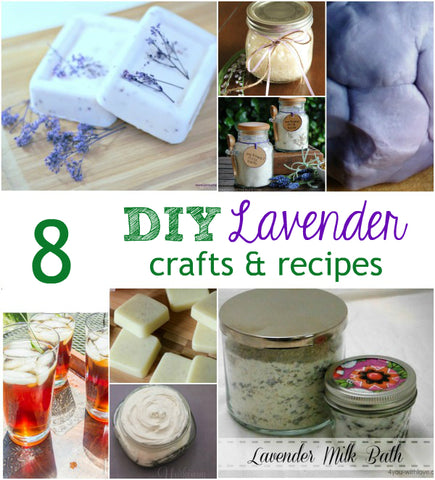It is the Year of the Lavender! Many people incorporate this plant into their daily lives. Whether it's in their garden, kitchens, or even their decor, lavender has become an important flower! Many aspects of this plant including its scent, attractiveness, texture, and usability have made it one of the most versatile plants you can have!

Lavender Types
Lavender is part of the mint family (Lamiaceae). It can be found in many regions all over the world, especially in temperate climates. The most common types that you see though are English lavender (L. angustifolia), Spanish lavender (L. stoechas), and French lavender (L. dentata).
English lavender
It is the hardiest in terms of garden performance. Some varieties, such as Hidcote, Munstead, or SuperBlue, have shown to overwinter reliably through USDA Zone 5 areas.
The English variety blooms are heavily scented and the flowers range in pink-purple colors—but some silver-white varieties are known to exist as well. The blooms sit on top of the plant above a gray-green base of leaves that can grow as high as 3 to 6 feet (1-2 meters) depending on where you live. Dwarf varieties are also popular as they have a more manageable height of 6-24 inches (15-60 cm).

Some varieties of English lavender include Annet, Aromatico, Big Time Blue, Blue Spear, Ellagence, Lade, Lavence, Sentivia, Sweet Romance, Vintro, and many more.
Spanish & French lavender
These varieties of lavender are native to the Mediterranean. While it can still tolerate a wide range of temperatures, It is more fragile to its English varieties and is less winter hardy (USDA Zones 6-9).
Their leaves are gray-green and longer than the English and have taller flowers that are thicker pinecone-shaped pink-purple flowers. It fragrance is attractive to bees so these varieties are great pollinator-friendly options for your garden. Spanish lavenders flower heavily in the spring time and have second flushes of flowers later in the growing season.

These varieties work well indoors and can be used as scented decor. Some varieties of Spanish & French lavender include Castilliano, Javelin Forte, La Vela, Papillon, Primavera, and many more.
Growing Conditions
Lavender grows best in full sun in dry soil (it does not like saturated roots so it is best to have well-drained soil). Adding inorganic mulches, such as gravel or sand, at the base could greatly help the soil conditions for a lavender bed. Little to no fertilizer is necessary to successfully grow lavender but good air circulation is a good practice to have. Depending on your region, high humidity may cause root rot due to fungus infection.
Lavender in your Garden
Lavender can be planted in a variety of places. It can be used a front border or it can be planted in mixed patio containers with other sun-loving plants. You can even plant it by itself to scent the air in a small space!
DIYing Lavender
Lavender can be used in a variety of ways for your daily lives. It can even be used in herbal medicines and self-care regimes. There are many homemade projects and recipes that can incorporate lavender including, herbal teas, culinary spices, essential oils, aromatherapy, balms, and much more. It is commonly added to bath salts, soaps, soaks, and perfumes because of its fresh fragrance and calming effects.
Due to its strong scent, dried lavender can be used to repel pests in your garden or in a closet as a fragrant sachet pillow to ward off moths.
Due to its versatility, it can be easily seen why this enjoyable flower has become a must-have in gardens and homes around the world. How can you add lavender into your garden and home in 2020?
The above article is from the National Garden Bureau:
https://ngb.org/year-of-the-lavender/?fbclid=IwAR02oh9fFkXRg6eA8bxP9U2DtIiIQb3jH8W5zP0gk9QUhf3_wEivbeefUfI


